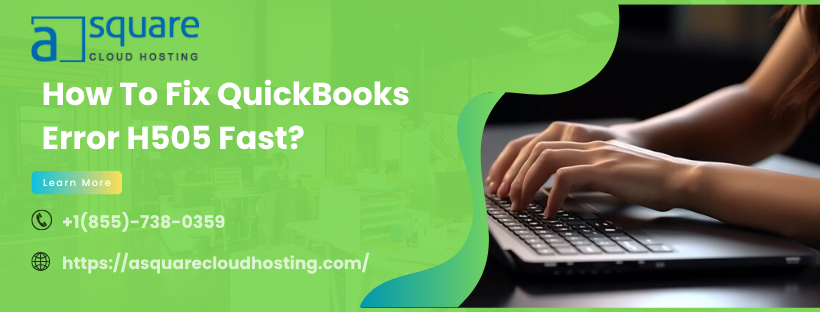In the heart of Malaysia’s evolving workplace culture, HR teams face a rising demand for accountability, speed, and structure. Payroll, benefits, and claims form the foundation of many employee conversations. However, these processes often lack clarity or consistency. That’s where employee claims management becomes more than just a system—it becomes a strategy.
This article explores how a strong claims process connects directly to HR goals. From cleaner records to better policy decisions, centralised data and timely reports shape outcomes that help both the employee and the company grow.
What Is Employee Claims Management?
Claims management refers to how companies handle requests for reimbursement. These might include travel, meals, training, or even medical expenses. The process involves form submission, verification, approval, and payment.
When managed with spreadsheets or emails, this process takes time and creates confusion. When digital tools step in, the system becomes quicker and more consistent. This helps HR do more than process requests. It gives them data that supports wider goals.
Common Problems with Manual Claims Processing
Many HR departments still rely on outdated methods. This slows operations and frustrates teams. Here’s where trouble often starts:
1. Data Scattered Across Platforms
- Some claims arrive by email. Others come with hard-copy receipts. Each format increases the chance of missed steps or delayed replies.
2. Human Error and Delays
- Mistyped numbers or lost files lead to backlogs. Staff might not know the status of a claim or what documents they need to include.
3. Fraud and Duplicate Claims
- Without centralised systems, it’s hard to spot patterns. Someone might submit the same meal twice, or charge for an expense outside the policy range.
These small issues grow quickly. They weaken trust and slow down the wider HR system.
Digital Claims Management – A Foundation for Smarter HR
When claims move to a single platform, something changes. The system becomes a source of truth. That truth fuels HR strategies.
1. Centralised Records Build Clarity
- All claims, receipts, and approvals stay in one place. Anyone with permission can see the full story of a claim without calling or emailing different teams.
2. Timely Reports Guide Policy
- Instead of guessing which departments submit the most claims or where costs increase, reports give exact answers. HR sees patterns in fuel, hotel, or phone use. This helps shape new rules.
3. Clear Workflow Reduces Errors
- Each claim follows the same path. Staff submit manager review, and finance clears payment. This reduces mistakes and saves time.
From the top level to team leads, clarity helps everyone move faster with fewer surprises.
Strategic Value for HR Teams in Malaysia
Beyond saving time, modern claims systems offer support in key areas of HR development.
1. Policy Review and Improvement
- Data shows which policies need updates. If one department submits high meal claims or frequent transport charges, HR can adjust budgets or set new limits based on facts.
2. Workforce Behaviour Insights
- Frequent late submissions or rejected claims reveal team habits. This helps identify who requires training or which teams face frequent road challenges.
3. Support for Compliance and Audits
- Malaysia’s tax rules and audit processes require proof. Digital records make it easy to show that processes follow local law and company rules.
Together, these insights support the shift from basic HR to strategic leadership.
How Centralised Data Helps Every Department
Claims management affects more than HR. It supports finance, admin, and even legal teams. A shared system keeps departments aligned.
1. Finance Teams Track Spending Trends
- With access to real-time dashboards, finance sees where cash flows. This helps them adjust budgets before overspending occurs.
2. Admin Teams Keep Up with Staff Needs
- When staff request equipment or services through claims, admins know what teams lack or request most often.
3. Legal Teams Reduce Risk
- Documented processes show consistency. This protects the company during disputes or investigations into misuse.
By uniting data, a claims system becomes a shared platform, not just an HR tool.
Key Features That Strengthen Claim Processes
To move from slow to strategic, systems need more than folders and forms. Look for features that connect workflows and support long-term plans.
1. Mobile Access for Field Teams
- Staff who travel or work on sites need to submit claims easily. Mobile access lets them upload receipts and complete forms on the go.
2. Auto-Checks Against Policy
- Systems can flag claims that exceed limits, lack documents, or repeat past claims. This reduces approval errors.
3. Timed Approvals and Alerts
- If managers forget to approve, the system sends reminders. Delays drop, and staff don’t wait in silence.
Each of these features adds flow to the process—and flow brings results.
Comparing Manual vs. Digital Claims Processing
The table below highlights key differences in performance between manual and digital claim systems. It shows how small changes in tools lead to major gains.
Introduction
Manual systems seem easy at first, but they often cost more time and lead to more mistakes. Digital platforms reduce errors and build stronger data sets.
|
Feature |
Manual Claims System |
Digital Claims System |
|
Submission Speed |
Slow (paper/email) |
Fast (mobile/web access) |
|
Accuracy |
Prone to errors |
High with policy checks |
|
Data Availability |
Scattered |
Centralised and searchable |
|
Approval Time |
Delayed (follow-ups) |
Tracked with notifications |
|
Reporting Insights |
Limited or missing |
Custom reports on demand |
|
Fraud Detection |
Hard to manage |
Easier with duplicate checks |
|
Audit Readiness |
Requires sorting files |
Ready with export tools |
This snapshot proves the benefit of moving to one digital space.
What Malaysian Companies Should Prioritise?
Each region has its business habits. In Malaysia, claims systems should reflect these local needs.
1. Bilingual Support
- Many teams use English and Bahasa Malaysia. Forms and notifications should support both.
2. Local Tax Considerations
- Claims systems must flag taxable benefits and match the format needed for local audits. This keeps companies in line with LHDN rules.
3. Regional Branches and Tiered Access
- Firms with outlets across Malaysia need to have separate views. The right tool allows each branch to see its data while HQ sees the full picture.
A well-structured tool matches the national and regional setup of the company.
From Approval to Strategy – A Step-by-Step Flow
Moving from a simple approval system to a strategic tool happens in stages. Each builds upon the last.
1. Capture Accurate Data
- Clean forms and structured fields help collect the right details.
2. Standardise the Workflow
- Make sure each claim passes through the same process. This helps teams learn and builds trust.
3. Build Custom Reports
- Once claims flow smoothly, HR can create reports on frequency, category, or department.
4. Use Insights to Adjust
- Reports help shape policy, training, and budget decisions. HR becomes proactive, not reactive.
Each stage lifts HR’s role from admin to advisor.
Conclusion
Claims may seem like small steps in a big system. But when done right, they shape workplace culture, improve trust, and build better plans. A well-built employee claims management process does more than pay people back—it gives HR the tools to act, guide, and lead.
In Malaysia, where companies span industries, locations, and languages, the need for structured tools grows fast. Centralised data makes work clear. Custom reports fuel change. Everyone wins—from junior staff to leadership.
FAQ’s
1. What is employee claims management?
Employee claims management handles staff expense submissions, approvals, and reimbursements, ensuring fair policy compliance and reducing administrative burden for HR teams managing financial processes efficiently.
2. Why is employee claims management important for HR strategy in Malaysia?
It supports transparency, cost control, and regulatory compliance while improving employee experience. A structured system strengthens strategic HR operations and builds trust between staff and management across departments.
3. How does centralised data improve claims processing?
Centralised data offers real-time access, prevents duplication, speeds up approvals, and improves policy consistency. It simplifies audits, ensures accuracy, and allows smarter resource allocation decisions for HR professionals.






